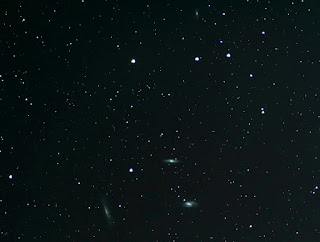I managed to destroy a laptop a few months ago; I was using it to run PHD/Cartes du Ciel to guide the telescope and the heavy dew did it in. Since then, I have obtained another laptop (thanks daughter). So, I am determined to have a more robust way of controlling the telescope AND sitting in comfort.
So, welcome to the new setup!
Celestron CG5-GT , set up, aligned, two star, plus two calibration stars (plus polar aligned using the Celestron tool if autoguiding).
Nikon D5300 connected via USB to laptop.
Laptop is up and running, powered by mains, WITH CASE CLOSED , in a plastic box and protected from the weather.
Laptop is running the following software:
1. TeamViewer(Remote desktop software https://www.teamviewer.com/en/ ): so desktop PC in the study can be used to control the laptop.
2. Digi Cam Control (http://www.digicamcontrol.com/ ): So the camera can be controlled via the laptop (Live View to single shot, control ISO, exposure, etc). The software has a setting specifically for astrophotography.
3. Cartes du Ciel; to control the scope via the laptop
4. (If autoguiding, PHD)
So, the TeamViewer software means I effectively run the laptop from my PC in the study. The Digi Cam Control allows FULL control of my Nikon plus enabling me to save images to both camera and laptop.
So, once the mount has been set up and the scope aligned and focused, I can target, capture and stack (using DeepSkyStacker Live) from my study. I added a wifi booster/extender to ensure the laptop/desktop have a good connection.







